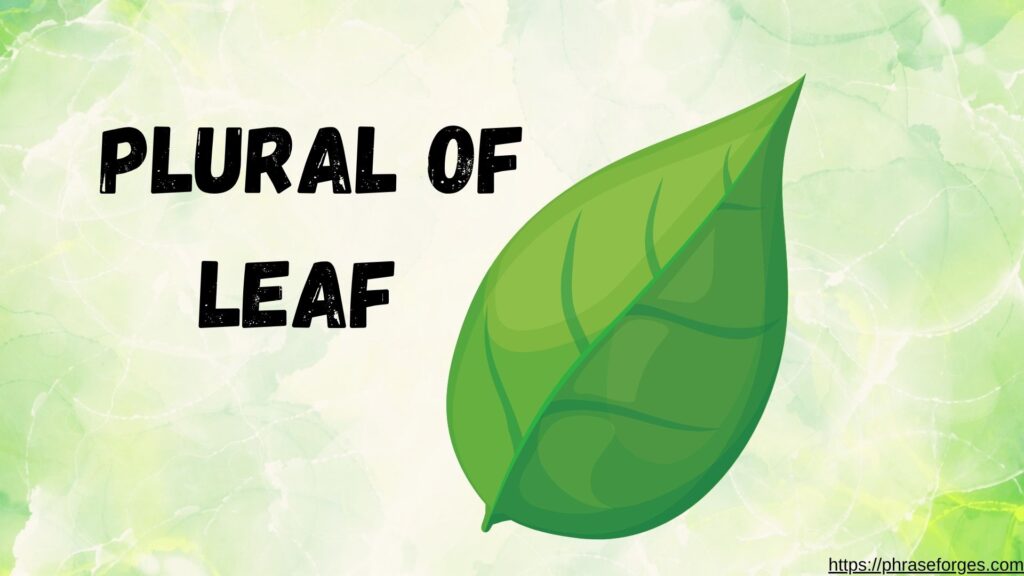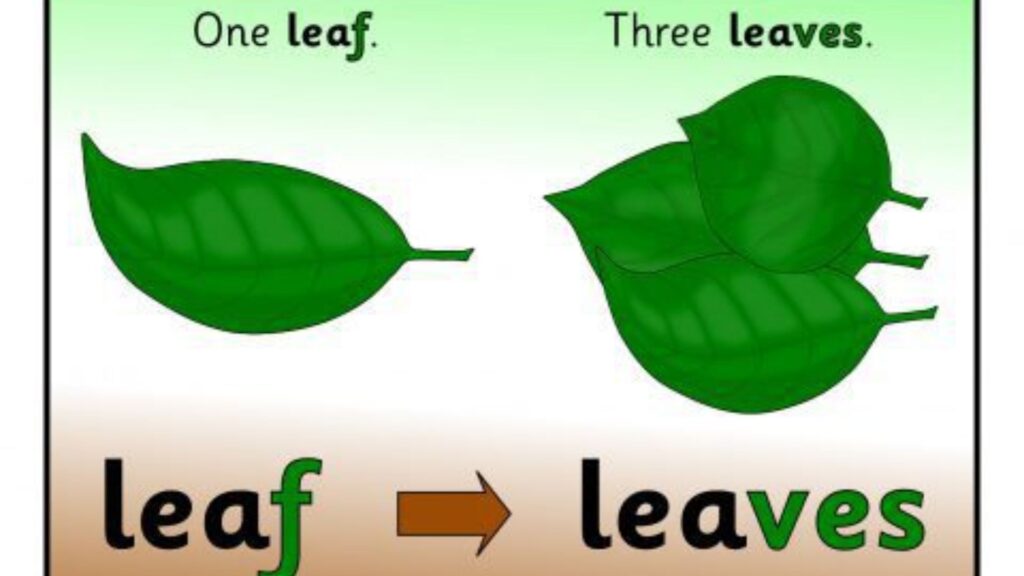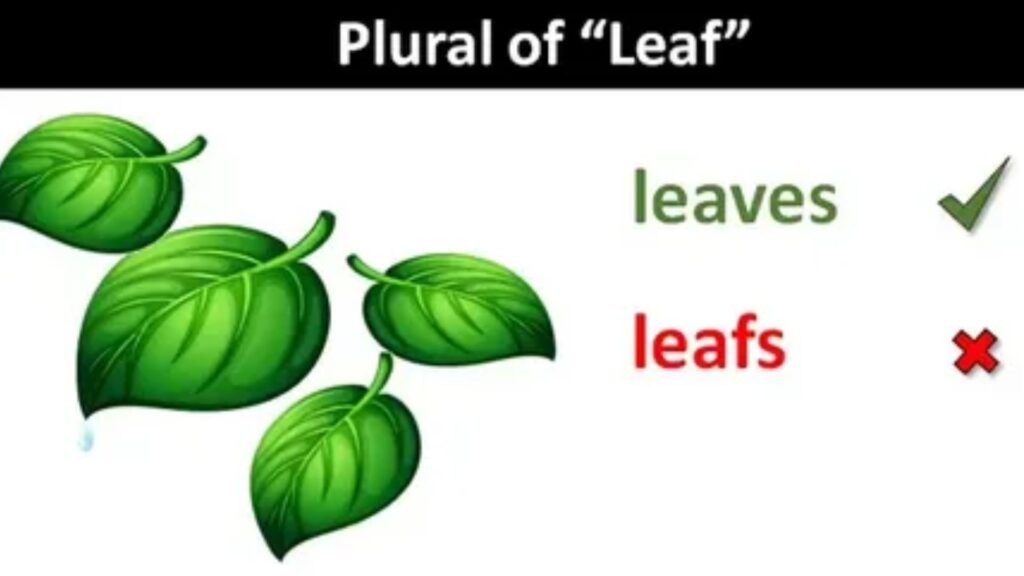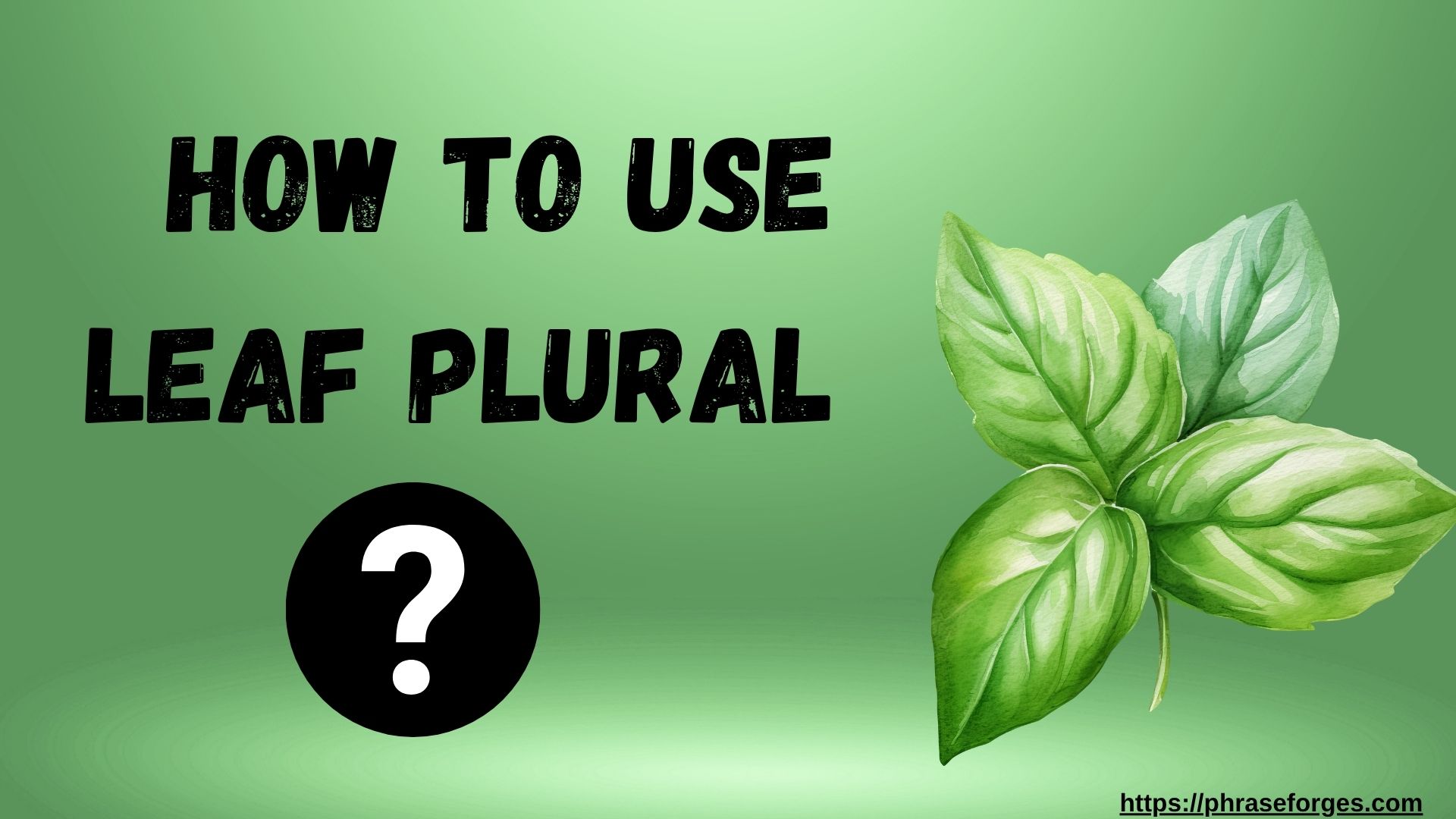Is it leafs or leaves? If you’ve found yourself second-guessing the plural of “leaf,” you’re not alone. This little word causes a lot of confusion not because it’s tricky in meaning, but because its plural form doesn’t follow the usual -s rule. This guide will help you master the use of leaf and leaves in different contexts, provide real-life scenario examples, and even test your understanding with a fun quiz at the end.
Let’s dive right in 🍃
Leaf Plural + Intro Explanation

The word leaf refers to the flat, green part of a plant or tree. It’s something we see every day — especially in autumn, when trees shed them by the thousands. Now here’s the key rule:
✅ The plural of leaf is leaves.
You might instinctively want to write “leafs” but in English, many words ending in -f or -fe follow a spelling shift where the “f” changes to “v” before adding -es.
So we have:
- One leaf
- Two or more leaves
This pattern also applies to other words like:
- knife → knives
- wolf → wolves
- life → lives
But beware not all words ending in “f” follow this rule. For example:
- roof → roofs
- chef → chefs
Simple Definition + Usage Overview
Let’s clear up the meanings of “leaf” and “leaves” quickly.
🔹 As a noun:
- Leaf: A flat part of a plant or tree that’s usually green and helps the plant absorb sunlight.
- Leaves: More than one leaf.
🧠 Example:
“In fall, the tree loses its leaves.”
🔹 As a verb:
- To leaf through: To flip quickly through pages of a book, magazine, or document.
🧠 Example:
“I leafed through the old photo album.”
Notice that in the verb form, “leaf” doesn’t become “leaves” it changes based on tense like regular verbs: leaf, leafed, leafing.
Clear Rules & Patterns

📌 When to use “Leaves”:
- Anytime you’re referring to multiple leaves from a plant or tree.
- When talking about collective foliage in nature or in metaphors.
📌 When to use “Leaf”:
- When referring to a single unit.
- When using it as a verb to describe flipping pages.
📌 When “Leafs” is correct:
- Almost never. The one major exception? The Toronto Maple Leafs hockey team. Because “Leafs” is part of a proper noun and brand name, standard grammar rules don’t apply there.
Bulleted Rules with Do’s & Don’ts
✅ Do:
- ✔️ Use leaves when referring to more than one leaf.
- ✔️ Say “leafed through” when describing flipping pages.
- ✔️ Know the f → v + es pattern for irregular plurals.
❌ Don’t:
- ❌ Say leafs unless you’re talking hockey.
- ❌ Confuse the noun “leaf” with the verb “leave” (as in “She leaves early”).
- ❌ Forget to check for other irregular plural patterns.
Multiple Example Sentences
Here’s how “leaf” and “leaves” appear in everyday language:
- “The wind carried a single leaf across the sidewalk.”
- “Autumn turns the leaves brilliant shades of red and gold.”
- “She sat on the porch, leafing through an old journal.”
- “The gardener raked all the leaves into neat piles.”
Before/After Examples in Everyday and Formal Contexts
✉️ Email Example – Correcting a Common Mistake
Subject: Fall Yard Cleanup
To: Peter
❌ Before:
Hi Peter,
Let’s schedule some time to clean up all the leafs before the storm hits.
✅ After:
Hi Peter,
Let’s schedule some time to clean up all the leaves before the storm hits.
Sarah
🗣️ Conversation Example – Correcting Verb Confusion
Before:
Mike: “I leafs through the magazine every morning.”
Ella: “You mean leafed past tense!”
After:
Mike: “I leafed through the magazine every morning while having coffee.”
Common Mistakes & Fixes
Here are some common trip-ups and how to fix them:
| Mistake | Why It’s Incorrect | Correct Form |
|---|---|---|
| The tree dropped its leafs. | “Leafs” is not the proper plural. | The tree dropped its leaves. |
| I leafs through the manual. | Verb form is incorrectly conjugated. | I leafed through the manual. |
| Fall is the time when leafs fall. | Again, wrong plural. | Fall is the time when leaves fall. |
Quick Reference Table
| Type | Singular | Plural | Verb Form |
|---|---|---|---|
| Noun | leaf | leaves | |
| Verb | leaf, leafed, leafing |
Scenario Examples for Each Use
📬 Email Example – Educational Setting
Subject: Science Project – Leaves Collection
To: Mrs. Clark
Hi Mrs. Clark,
For my plant biology project, I collected leaves from five different tree species. I pressed them between pages of an old book so they’d dry flat.
Looking forward to presenting them next week!
Mia
🏡 Home Dialogue
Liam: “Why are there so many bags on the curb?”
Amelia: “We cleaned up all the leaves in the backyard this morning.”
📖 Literary Context
“She sat in silence, her fingers gently leafing through her grandmother’s recipe book, each page filled with stains and memories.”
✅ Mini Quiz: Test Your Leaf Knowledge!
Try these quick questions to lock it in:
1. What is the correct plural of “leaf”?
A) Leafs
B) Leaves
C) Leavs
👉 Answer: B) Leaves
2. Choose the correct sentence:
A) I leafs through the book.
B) I leafed through the book.
👉 Answer: B) I leafed through the book.
3. Which is a correct idiom?
A) Turn over a new leaf
B) Pull the leaf under the rug
👉 Answer: A) Turn over a new leaf
4. Which sentence uses the verb form correctly?
A) I leaves the book on the table.
B) I leafed through the book last night.
👉 Answer: B) I leafed through the book last night.
🌿 Common Idioms & Expressions with “Leaf”
English is full of figurative uses of the word “leaf.” Let’s explore a few:
| Idiom | Meaning |
|---|---|
| Turn over a new leaf | Start fresh; change behavior |
| Shake like a leaf | Tremble with fear or anxiety |
| As rare as a four-leaf clover | Something very uncommon |
| Take a leaf out of someone’s book | Imitate someone’s positive example |
🧠 Example:
“After the meeting, Jenna decided to turn over a new leaf and start arriving on time.”
🌳 Leaf Plural Explained – Final Takeaway

In almost every context, the correct plural of leaf is leaves. Whether you’re describing trees in autumn, working on a school report, or flipping through pages of a book, this rule holds strong. The only real exception is the Toronto Maple Leafs, where the name is a proper noun that sidesteps grammar rules.

